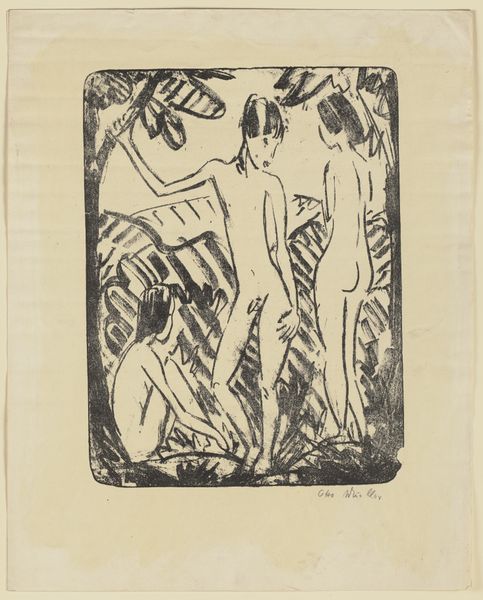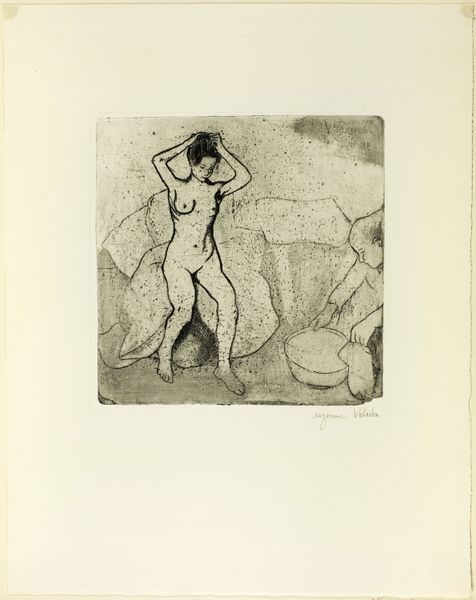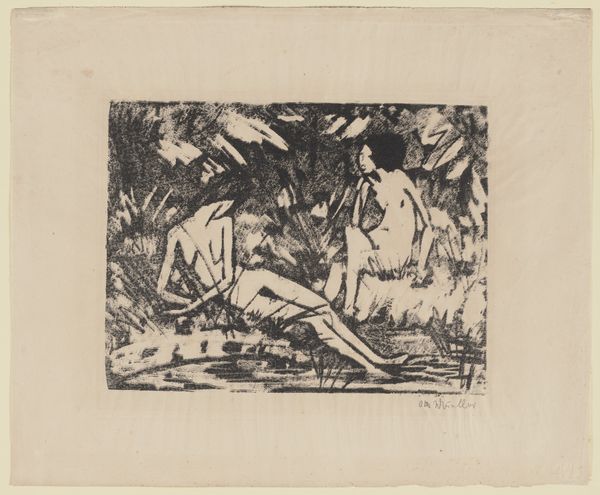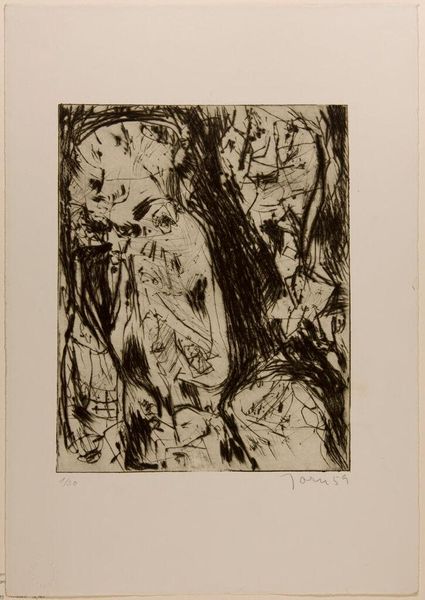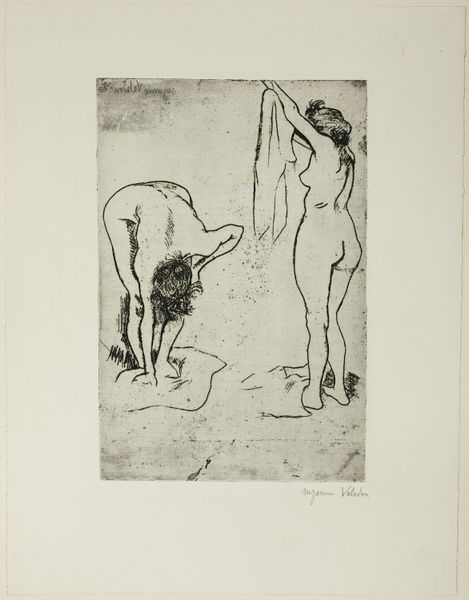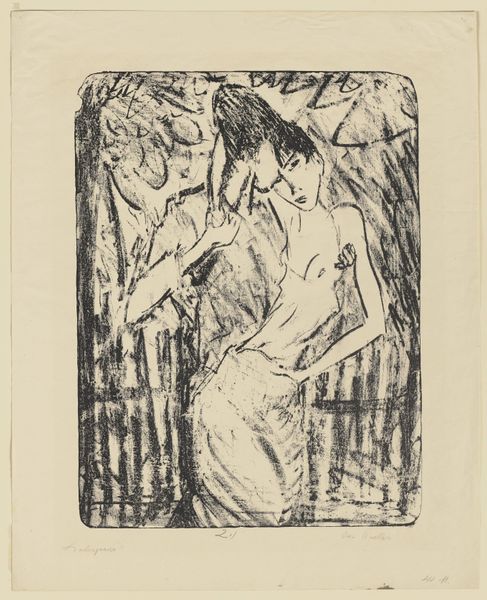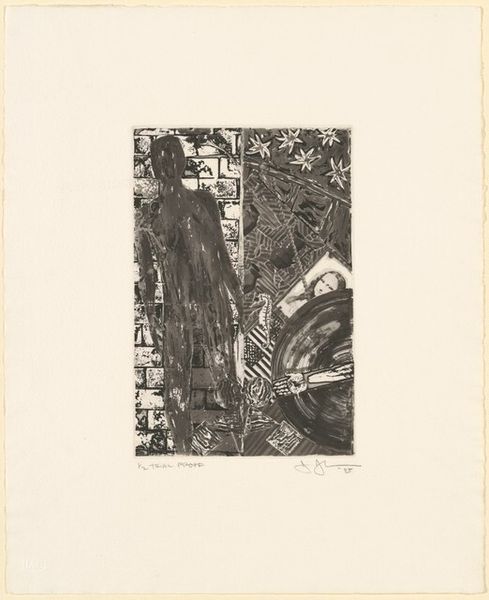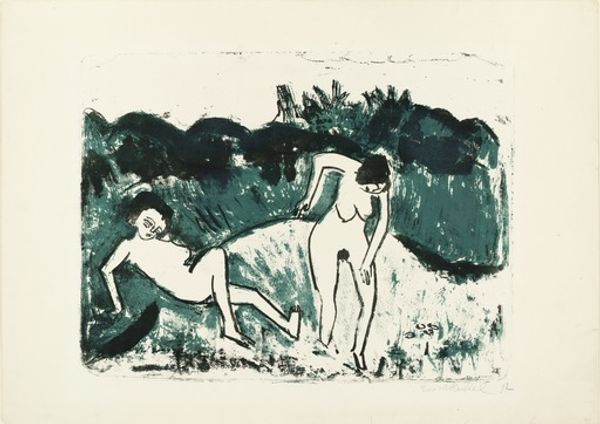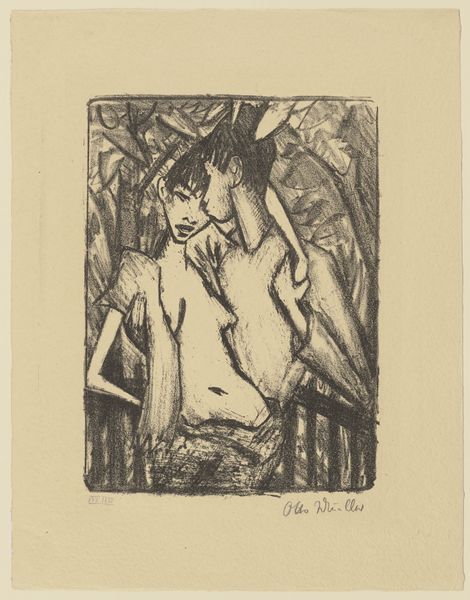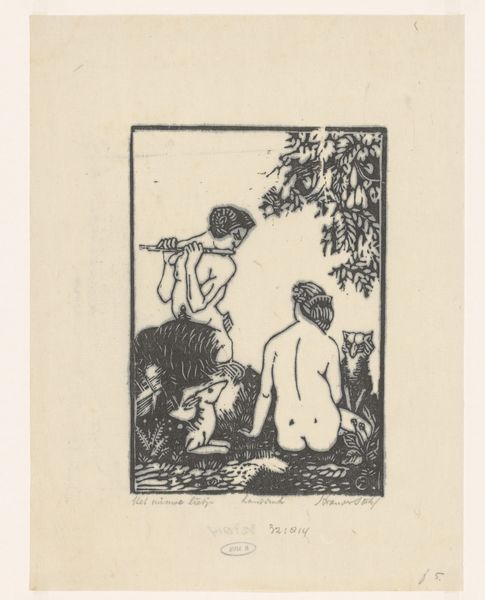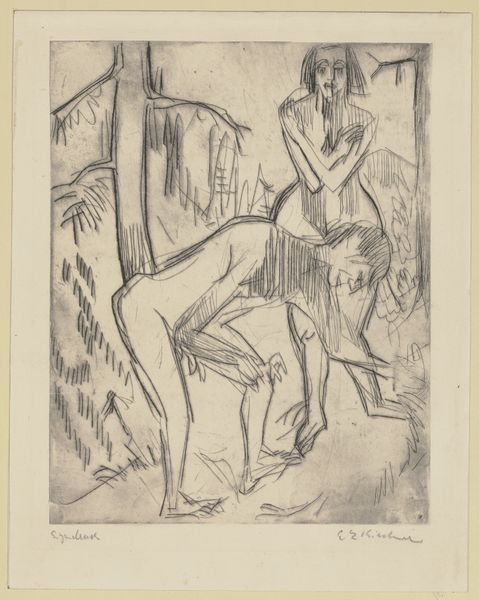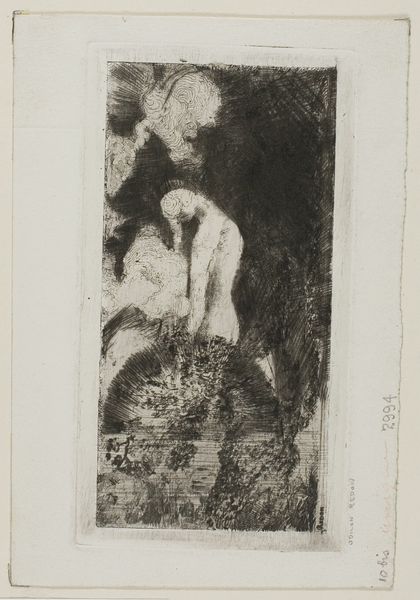
drawing, print, etching, paper
#
drawing
#
light pencil work
#
ink paper printed
# print
#
etching
#
pencil sketch
#
paper
#
personal sketchbook
#
ink drawing experimentation
#
pen-ink sketch
#
france
#
men
#
sketchbook drawing
#
watercolour illustration
#
sketchbook art
#
watercolor
Dimensions: 193 × 228 mm (image/plate); 471 × 370 mm (sheet)
Copyright: Public Domain
Curator: Welcome. We’re looking at Suzanne Valadon’s etching "Women and Child at the Edge of the Water," created in 1904, currently residing here at the Art Institute of Chicago. It's rendered with remarkable economy of line. Editor: Immediately I sense a quiet confidence in this scene, almost a radical assertion of women occupying space, unclothed and unburdened, right on the edge, both literally and metaphorically. There's an intimacy and casualness I really appreciate. Curator: It is interesting, because Valadon challenged many social norms within the artistic structures of her time. Coming from a working-class background, and beginning her artistic journey as a model, she offers a rare glimpse into female figures conceived outside of the traditional male gaze. Her socio-economic context certainly informs her subject matter. Editor: Absolutely. Her position gave her an insider perspective, critiquing those norms by portraying women with a sense of self-possession that goes against the typical passive or objectified portrayals of women at the time. Look at the standing figure, hand-in-hand with a child—she's grounded, not sexualized. And the reclining figure; there is no coy covering or seductive pose, just rest. Curator: And as an artist working outside the academy, self-taught, she rejected traditional artistic training and expectations. The raw quality of the etching feels like a direct reflection of that defiance, doesn't it? Her background shaped her. The setting may represent a space for marginalized groups, a quiet revolution through imagery of daily life. Editor: I agree. I mean, beyond the personal—this piece enters dialogues concerning bodily autonomy, the male gaze in visual media, and womanhood through labor; a revolutionary notion given her social and economic standing. This piece really opens space to confront uncomfortable dialogues and create a space of discussion that involves bodies in our political space. Curator: Definitely. It seems even a scene of quiet repose on paper can embody quiet revolutionary undertones and question the politics of her era, inviting all of us to question our own current place within our societal landscapes. Editor: Right, it serves as a potent reminder to interrogate who has been historically excluded from the canon and to continuously broaden our perspectives on representation, and understand that our position gives us a stand. I appreciate the radical way Valadon claims artistic territory.
Comments
No comments
Be the first to comment and join the conversation on the ultimate creative platform.
